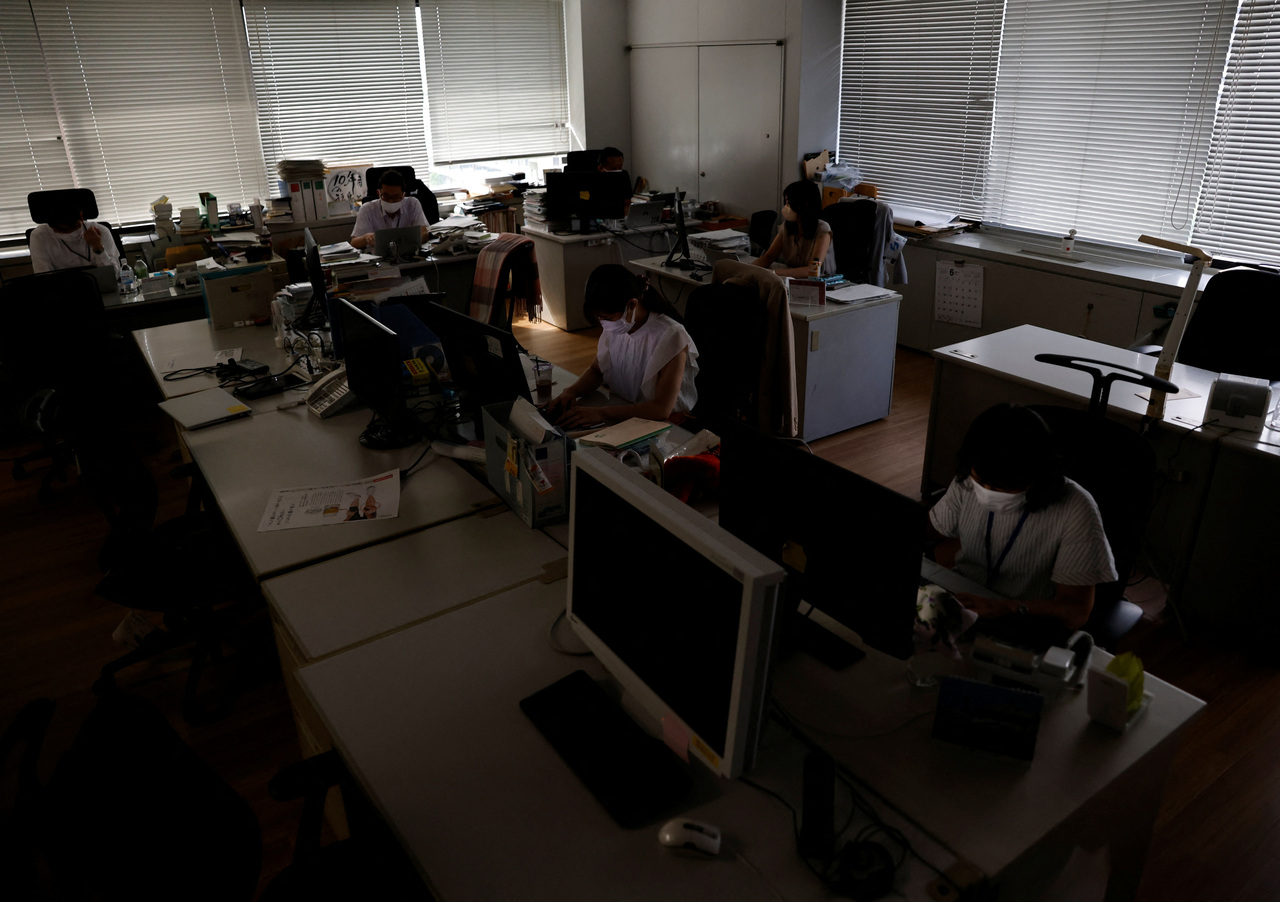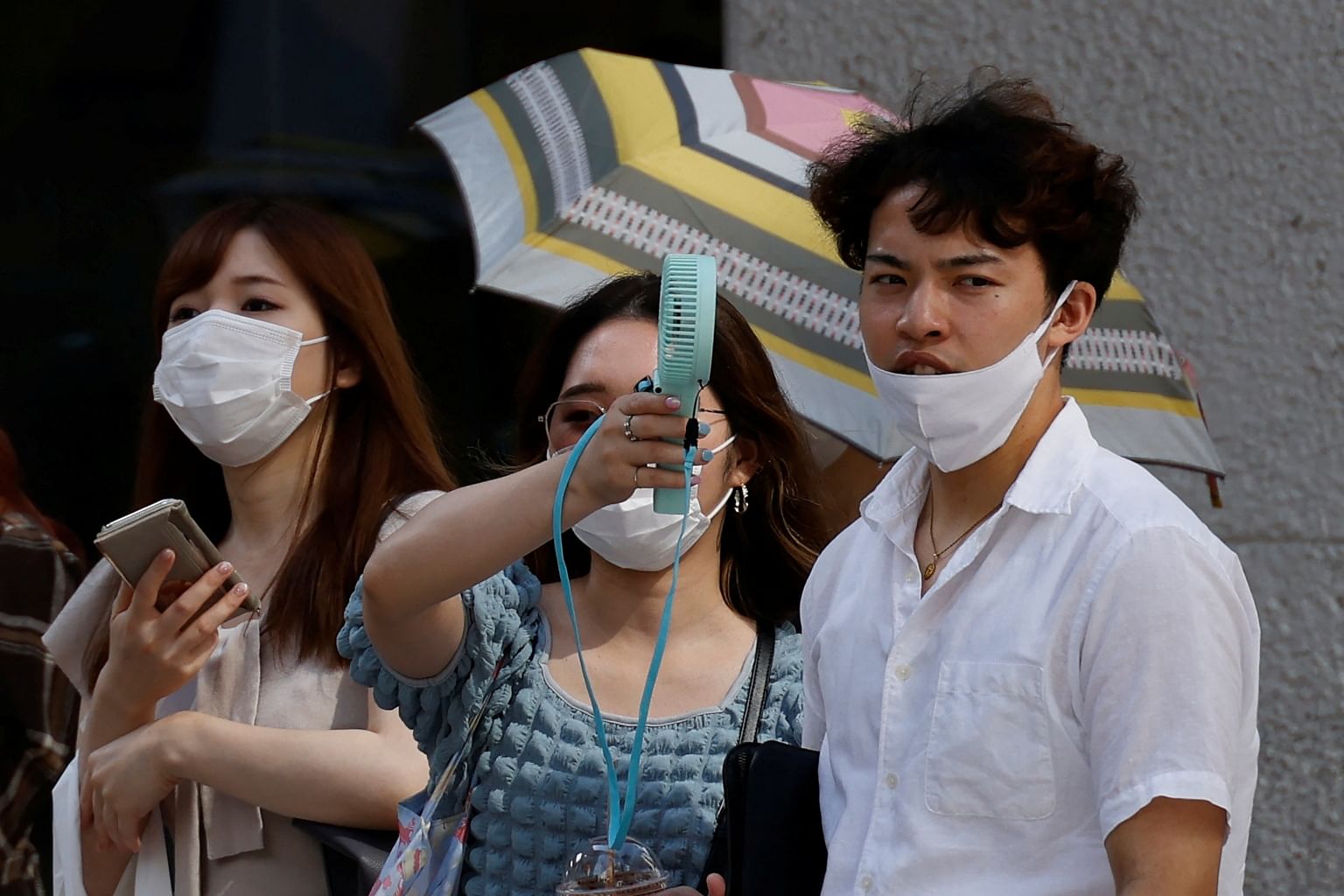Japan faces looming power crunch as it swelters in scorching heatwave
Sign up now: Get ST's newsletters delivered to your inbox

Buildings are dimly lit to save electricity during daytime as Japanese government issues warning over possible power crunch in Tokyo, on June 27, 2022.
PHOTO: REUTERS
Follow topic:
TOKYO - Television displays were switched off in appliance stores and lights turned to power-saving mode in offices on Monday (June 27), with parasols out in force as eastern Japan battles the highest-recorded temperatures in June.
The anticipated surge in demand for power due to the unprecedented heatwave triggered a Trade Ministry advisory for households and businesses to cut back on power usage, especially between 3pm and 6pm when the supply was set to be “very tight”.
These efforts managed to avert a power outage on Monday, with power reserves above the minimum level required for grid stability.
But the Ministry of Economy, Trade and Industry has again issued the “very tight supply” power warning for the same period on Tuesday (June 28).
The Hokkaido Electric Power Co, which services Hokkaido in the north, and the Tohoku Electric Power Co, which services north-east Japan, followed suit.
Japan’s grid coordinator also ordered power sharing among regional utilities, such as getting Kansai Electric Power Co, which services western Japan, to supply Tokyo Electric Power Co in the worst-case scenario.
This is, however, a stopgap measure, given the scorching heatwave that is blanketing Japan.
While the official advisory recommends air-conditioning temperatures to be set at 28 deg C, Tokyo Governor Yuriko Koike urged residents to “not overdo” things so as to avoid heatstroke.
The mercury soared to 35.1 deg C in central Tokyo on Monday, the third consecutive day it has breached 35 deg C.
Eighty people aged 12 to 96 were sent to hospital for heatstroke-related symptoms as at 3pm on Monday, the Tokyo Fire Department said, with another 93 people sent to hospital on Sunday.
Nationwide, the highest temperature of 39.8 deg C was set in Sano city in Tochigi prefecture, north of Tokyo.
The Japan Meteorological Agency declared the rainy season over on Monday in the greater Tokyo region – the earliest on record going back to 1951 and a full 22 days earlier than average.
Summer starts with the end of the rainy season, and this points to a hotter and longer summer than usual.
As part of efforts to stave off a power outage, the Tokyo Metro powered off some escalators at train stations, while government ministries shut off some lifts.

As of 11am, temperatures in downtown Tokyo hit 34.1 deg C and those in Kiryu were at 36.3 deg C.
PHOTO: REUTERS
A spokesman for real estate firm Mori Building told The Straits Times that it will reduce the usage of lighting indoors by up to 70 per cent, while decorative exterior lighting such as building illumination will be shut off at 30 of its buildings, including the Roppongi Hills and Toranomon Hills mixed-use complexes.
A spokesman for beverage firm Suntory Holdings told ST that it is shutting off all lights during lunch hour, and setting air-conditioning at 28 deg C at its offices in Tokyo and Osaka.
Japan’s power crunch was exacerbated by unsteady supplies of liquefied natural gas (LNG) due to Russia’s invasion of Ukraine.
But data has also shown that it might have overstretched in its net-zero climate push with a series of closures of ageing thermal power plants – both coal and LNG ones – without first ensuring a stable supply from renewable energy.
Nuclear energy once supplied about 30 per cent of Japan’s power supply, but most of the 33 reactors deemed operable under new safety standards after the Fukushima Daiichi accident in 2011 remain shut down.
Under a new methodology announced this month, the government will issue a supply “advisory” a day before if power reserve ratios are likely to drop below 5 per cent.
This will be raised to an “alert” if the figure is likely to fall below 3 per cent, when there are risks of power shortages and blackouts.

